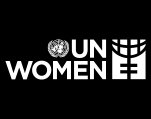Moonshots embody a duality: teeming with optimistic potential yet fraught with uncertainties on how they might unfold. It’s the blend of curiosity and hope that ignites our capabilities, propelling us to dream ambitiously, innovate relentlessly, and take audacious leaps that reshape the course of humanity. These pivotal moments, etched in history, serve as catalysts for transformative change.
Technology’s limitless possibilities
Right now, we’re in the midst of the fourth industrial revolution, rich in disruptive technologies like automation powered by AI, that enables humans to do more higher value work vs repetitive, mundane tasks, allowing organizations to increase their efficiencies to deliver better outcomes for their customers. Technologies like these will redefine how we work and how we will deal with major threats to our existence, like wars, global warming and pandemics. Think boosting a Ukrainian relief agency’s ability to aid refugees by 400 percent … helping a huge national health organization repurpose ~580,00 hours a year (the equivalent of 66 years) by 2025 … or saving a large energy company $120 million in taxes, increasing the accounting team’s efficiency by 40% and completely eliminating their weekend workload in just three-weeks time.
There are already thousands of true stories like these and the results demonstrate why AI is exploding. A recent Deloitte study revealed that organizations in every industry are experimenting with AI and that 94% of all business leaders see AI as critical to their company’s success. AI is predicted to double productivity within the next decade.
Inclusivity is vital—and missing
A critical stage in building any AI-powered technology is “training” the AI by supplying it with unbiased data to learn, both at the micro level of data inputs to large-scale data inputs for large language models. The data selected determines the output and inclusivity of the technology being developed. When a small, non-diverse team trains AI, using a data set that does not reflect the experiences of the global population but only their more narrow view of the world, its bias can amplify and generate incorrect and at times dangerous information that results in bad decisions.
People impacted by AI trained with these narrow data sets tend to be groups not represented on the development team, like women. Previous data set blunders have resulted in companies offering lower credit limits to women or excluding female job candidates. They can cause even greater harm, for example, biased flight risk assessment by law courts or faulty facial recognition by police that results in wrongful arrests. Yet, done right with a large data set and inclusive mindset, AI solutions can help reduce unconscious biases inherent in our communities and psyche.
In short, only diverse teams with diverse skill sets that reflect the distribution of the world’s population can build fair AI that will effect responsible and ethical change in the world. That is our moonshot challenge because of women’s underrepresentation in AI development teams and the limited presence of women in AI education. Only 9 percent of those in an AI Specialist role, 12 percent of AI researchers, and 30 percent of any AI talent at all are women. Only 16 percent of global tenure-track faculty focused on AI are women.
Given our current growth rate of AI-powered technologies and the fast pace of building data sets to train AI, it is imperative to incorporate women leadership in building the AI moonshot. There are already some great examples of women influencing the AI landscape. Take Cynthia Breazeal, a leading MIT computer science professors who leads the institution’s Personal Robots group and directs its Initiative on Responsible AI for Social Empowerment and Education—or Stanford’s Fei-Fei Li, Co-Director of the university’s Human-Centered AI Institute, the former Director of its AI Lab—and the Co-Founder and Chairperson of AI4ALL, that advocates greater DE&I across AI education. Their thought leadership should be recognized and more widely celebrated to ensure that their voices are not forgotten in the dawn of the AI revolution.
Take the moonshot
As women from an incredible range of differing circumstances, the ways each of us can contribute to this moonshot are very unique. Still, there are three questions that we can all ask ourselves that will help each of us form a personal plan of action around AI.
- How can I contribute? Start by exploring AI use at different industries and impact organizations that you may be part of. Consider how it applies to your own career path, work and community activities. Read up on important trends and different ways the world is working with generative AI. Once you understand the role of AI in your day-to-day environment—and what it could be—you’ll have some ideas on ways to improve its quality and create new uses for it.
- How can I increase the representation of women in the AI economy? Consider different ways you can involve others to participate in AI and hopefully share—or learn to share—their perspectives and talents through AI. Find ways to help people from your village, your team or a nonprofit you support work better with it. Invite or enable women you know from work to attend an AI conference with you. The wider the AI ecosystem, the more inclusive.
- How would a woman I admire deal with this? What would she say to me today? We all have our heroes. Two of mine are Eleanor Roosevelt, who once said, “Well-behaved women rarely make history”—and Reshma Saujani (CEO of Girls Who Code), who says “Teach girls bravery, not perfection.” To me, the underlying message of both is that unless we step out of our comfort zone to take some radical risks and fight to prevent the worst consequences of biased AI, our moonshot may remain unachievable.
AI can be a catalyst to usher us into a realm brimming with unprecedented opportunities and hope, provided we harness its potential carefully and inclusively. Nurturing our collective curiosity and collaboration is pivotal in overcoming the inclusivity gap currently posed by AI. Together, we can embark on the ambitious journey towards a future where AI allows us to continue to take audacious leaps for the betterment of humanity. That’s the moonshot.

















1,897 thoughts on “AI Questions All Women Need to Ask…And Answer”
where to buy levitra in canada online
ivermectin buy
doxycycline tablets where to buy
Comments are closed.